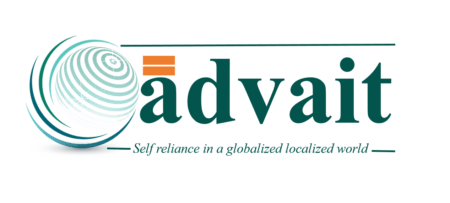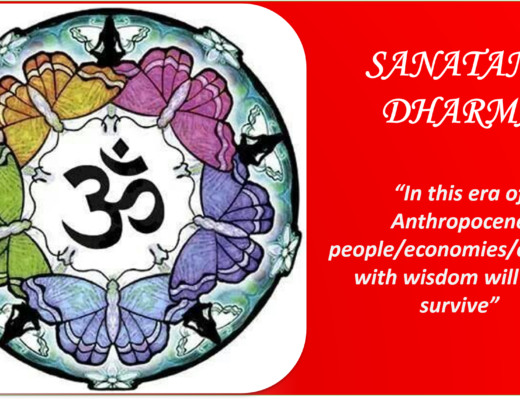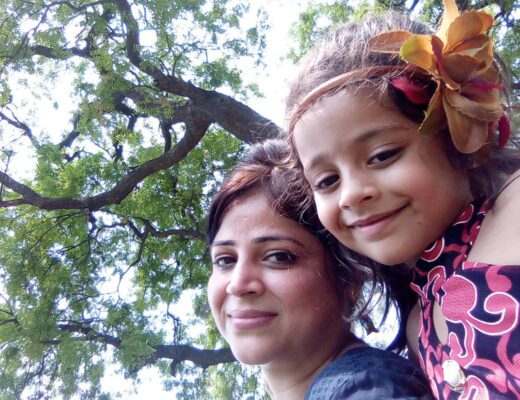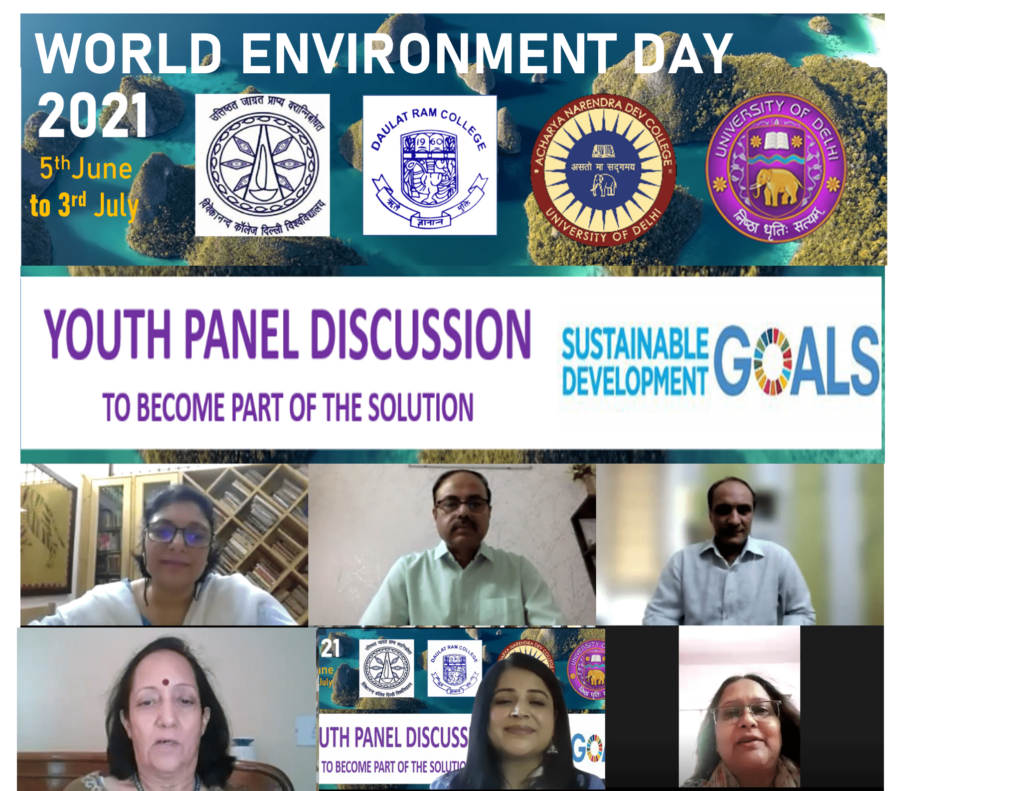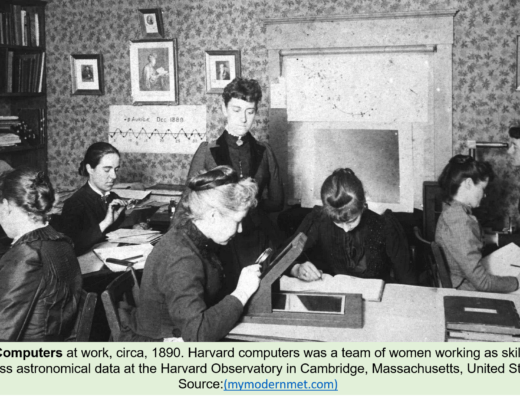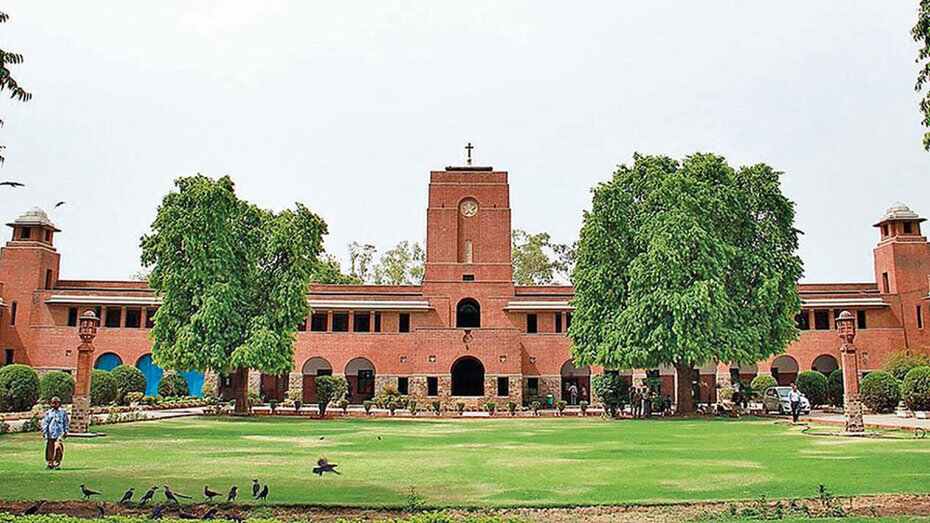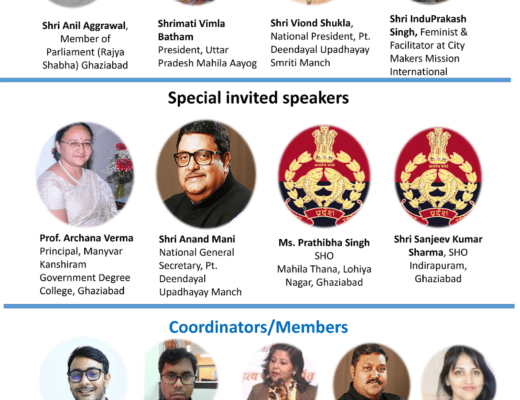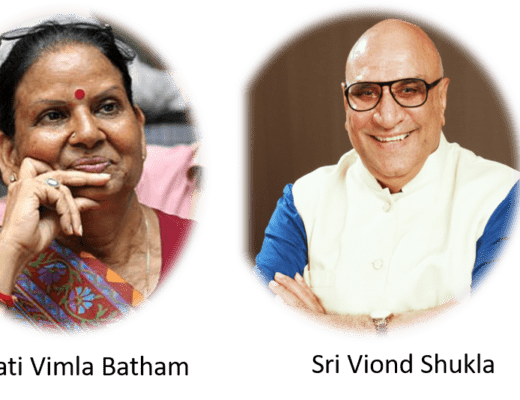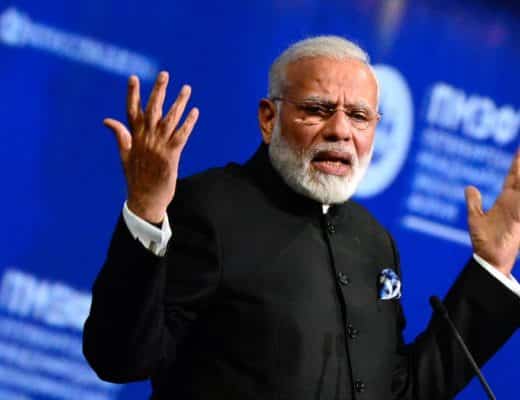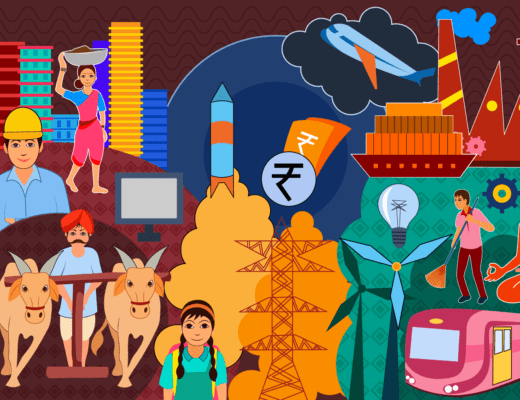Abstract:
The role of academic institutions as an interface to meet the aim of liberal education, socialization and social change has been formulated and theorized for a long time. Yet when it came to implementation this was a challenge. The major shortfalls identified are lack of proper framework to attain the goal, lack of academia-policy-community interface to inform, inspire and implement issues at community level, lack of proper methodology to engage with the community at individual level. In general, conventional methods to engage community through organizing workshops, camps etc. doesn’t pay much and end up with either boring lecture sessions or sample/collateral (written material) distribution at most.
In this paper, considering the major shortfalls mentioned above and requirements needed, a very ‘implementable’ framework and methodology (mentioned below) is put forward. This framework is being implemented at Vivek Vihar (New Delhi – 110095) to meet the aim of liberal education, socialization and social change. The work done in the specified area has been presented in the paper. The paper also presents the framework in a three stage diagram of inform, inspire and implement. The framework implementation was done by Resilience Center Vivekananda College Chapter (RC-VNC) as an academia-policy-community interface in association with Resilience Center Global Network under project resilience. Overall, the framework implementation in VivekVihar is successful with more than three hundred local community participants at eight different occasions within a time span of 1 year. At present, under Project Resilience we have been successful to develop an interface between Academia, Community, Policy and Industry with three different community coordinators, who have voluntarily agreed to work with RC-VNC as coordinators for the community to meet the aims of liberal education, socialization and social change. The paper highlights the role that academic institutions can play foster urban and community resilience.
Introduction:
Liberal education, Socialization and Social change are constituents of a crucial aspect of the present human development process. Another aspect equally crucial is urban resilience. In effect there are important cross links with these two notions, and urban resilience can be thought of as a sub set of the notions that socialization, social change and liberal education bring. If we want to ask that can liberal education bring about social change, a sub set of this question will be can a modern academic institution bring about urban resilience. This paper is an enquiry to that latter question.
Most literature will point out to four actors in the urban resilience space – community, industry, policy and academia.
This paper is to highlight the role of academia and pivotal role it can play to nest urban resilience activities.
First we shall discuss the notion of urban resilience, then showcase a framework to instil urban resilience. We then show the case of Vivekananda College, Delhi University as an academic institution playing a pivotal role in accomplishing this activity and nesting the idea of community and urban resilience in its surrounding localities. Finally we end with concluding thoughts.
Urban Resilience
Cities are an important bench mark in the process of human development. The share of urban population is increasing rapidly (specially for India), and cities designed ‘smartly’ will lead to effective climate change regimes. Cities given an immense opportunity to people specially poor and vulnerable to improve quality of life sooner than later, and give opportunities for human dignity. However, cities have various stakeholders and without proper coordination the results can be quite adverse.
A resilient city is a city where there are (Arup 2014):
- Collective identity and mutual support: Observed as active community engagement, strong social networks and social integration.
- Minimal human vulnerability: Indicated by the extent to which everyone’s basic needs are met.
- Diverse livelihoods and employment: Facilitated by access to finance, ability to accrue savings, skills training, business support and social welfare.
- Adequate safeguards to human life and health: Relying on integrated health facilities and services, and responsive emergency services.
- Social stability and security: Including law enforcement, crime prevention, justice, and emergency management.
- Availability of financial resources and contingency funds: Observed as sound financial management, diverse revenue streams, the ability to attract business investment, adequate investment, and emergency funds.
- Reduced physical exposure and vulnerability: Indicated by environmental stewardship; appropriate infrastructure; effective land use planning; and enforcement of planning regulations.
- Continuity of critical services: Indicated by diverse provision and active management; maintenance of ecosystems and infrastructure; and contingency planning
- Reliable communications and mobility: Indicated by diverse and affordable multimodal
- Transport systems and information and communication technology (ICT) networks; and contingency planning.
- Effective leadership and management: Involving government, business and civil society, and indicated by trusted individuals; multi-stakeholder consultation; and evidence based decision-making.
- Empowered stakeholders: Indicated by education for all, and access to up-to-date information and knowledge to enable people and organisations to take appropriate action.
- Integrated development planning: Indicated by the presence of a city vision; an integrated development strategy; and plans that are regularly reviewed and updated by cross departmental working groups.
While the above gives us a set of parameters of what is needed to achieve urban resilience, but the ‘how to’ is the necessary part of the narrative which is discussed in the next section.
Framework
Given below is the Inform, Inspire, Implement framework, which follows a robust decision making paradigm. (source: authors)
Stage 1 INFORM (Information collection and dissipation)
During stage one, the simplest way to narrate the activity type is that the stage involves the collection of information is directed towards identifying strengths, weaknesses, opportunities, and threats (SWOT) of the locality, training needs and present basic information. In return, information dissipation in a condensed yet simple format is given to concerned stakeholders.
The information processes are contextually aligned to culture (eg. India is a high context culture, as opposed to Northern Europe which is low context; more on cultural contexts is given in appendix 1).
Stage 2 INSPIRE (Creating a set of solutions or actions that ‘may’ be taken)
It is at this stage that human resources are trained and capacities are built for an option or set of options. This is essentially considered the crux in the ‘keep options open/alive’ method of the robust decision.
Stage 3 IMPLEMENT (Project Implementation and Maintenance stage)
In this stage if one of the options is chosen as a part of the multi-stakeholder interaction then it is implemented.
Case: Vivekananda College, Delhi University (DU): how a DU college can play a play a pivotal role in promoting urban and community resilience
To instil concepts and values of urban resilience in its surrounding areas, Vivekananda College faculty with a collaboration with Resilience Center Global Network (RCGN) (namely authors) went into a project mode. The project was named as Resilience Project with the motive of meeting the challenges of emerging India. Given below is the snapshot of the project report.
Project Investigator
Dr. Seema Sharma
Department of Environmental Studies
Research Partner
Resilience Center global network
University of Delhi meeting the challenges of India
- Challenge undertaken is to bring Resilience in Society at Community Level
B. Major shortfalls till date to achieve the goal
- Lack of Framework to attain the goal:
- Lack of Academia-Community interface to Inform, Inspire and Implement issues at community level
In brief, whatever we are teaching, studying and doing research at the academic level can be implemented to the community level through academia community interface.
- Lack of Academia-Industry interface
To bridge the gap, interface between Academia and Industry is important. It will allow academicians and industry to come together at a single platform to work towards building resilience in society.
- Lack of proper Methodology to engage with community at individual level to attain the goal
- A proper methodology to inform, inspire and implement issues at community level through community engagement activity is an important parameter to work upon before targeting the goal of resilience in society at community level.
- Conventional methods to engage community through organizing workshops, camps etc. doesn’t pay much and end up with either boring lecture sessions or sample distribution at most.
- The above mentioned facts about the conventional methods have been again proven to be true in case of VivekVihar, Delhi as well by the community people itself.
- This study was conducted while having interactive session with the community people (Over 300 people of VivekVihar Community participated at various stages and over 250 people participated in the workshop titled “Health and Sanitation: Women’s Perspective , 31stJanuary 2015 at Vivekananda College).
- The method also focuses on “Cultural” and “Behavioral” aspectsat a community level to ensure meaningful long term impacts.
C. Framework for Resilience at implementation level
- Considering the major shortfalls mentioned above, requirements and need of the community- the resilience framework (Fig.2) has been adapted to test at the implementation level along with the three stages strategic approach (Fig 3).
- The Resilience framework has been developed and published in International Journal of Regulation and Governance, 2012 – by Arnab Bose, Jed Wolf and Seema Sharma.
- The three stage strategic approach has been developed especially with the purpose to givea holistic view/approach to the resilience activity and to engage the community at individual level-©2014, Seema Sharma and Arnab Bose.. Figure 2: Resilience Framework
| Three stage strategic approach |
Figure 3: The three stage strategic approach
D. Implementation of Resilience framework at VivekVihar, Delhi
- To test the resilience framework at implementation level a detailed study has been done in VivekVihar area by Environment society Vivekananda College in association with Resilience Center Global Network (RCGN).
E. Stakeholders under community engagement activity
Students of the college, parents and immediate relatives of the students, teaching and non-teaching staff of the college and local community of the college within 5-10 km.
| Community walk-through to identify need and issues of the community by the community.Capacity building workshop to instill resilience in community |
F. Resilience Approach &Methodology
| Need was identified by the community. Considering the need of community, workshops/interactive sessions had been organized on the subjects such as health and sanitation, menstruation management and safe disposal of sanitary napkins, women empowerment and livelihood etc. |
| Acknowledgement of person/activity to inspire the person/community. |
Methodology followed
- Community ‘walk-through’ to understand need and issues of the community by the community.
- Interactive session
- Open discussion
- Issue-specific games etc.
G. Work done and Achievements as per the framework
Area: VivekVihar
Stage 1: Inform-Activity 1&2
Activity 1: Community engagement activity to identify issues by the community to the community.
Activity 2: Capacity building workshop for students to instill resilience in community
| Picture 1: Glimses of stage 1 Community Engegement Activity |
Table 1: list of issues identified by the VivekVihar Community at stage 1 activity
| Category | Issues |
| Waste management | Throughout littering on roads, outside houses, in corners of buildings, shops and apartments. Waste segregation and management at home |
| Infrastructure | Uncomfortable bus stops and height of footpaths.Open drainage and pipelineUnplanned placed hoardings on footpaths |
| Health and sanitation | Public toilets available for men but not for womenProper disposal of sanitary napkinsPollution in air, water and its effect on health |
| Disaster management | What they will do in case of earthquake? |
| Telecom radiations | People have identified this as a risk but are not aware of the magnitude of the problem – need more information and awareness of the subject. |
| Picture 2: Glimses of issues identified by the community |
Stage 2: Inspire-Activity 3
- Acknowledgement of Person/Activity
- Vivekananda College and Resilience Center Global Network acknowledge the effort of “Mr. Ashish” (Worker-Municipal Corporation Department, VivekVihar) to maintain the cleanliness in VivekVihar area in Delhi॰
| Picture 3:Acknowledgement of Mr. Ashish (worker-MCD) for his effort in maintaining cleanliness in Vivek Vihar. Note: Person was identified after more than seven random visits to the site. |
Stage 3: Implementation-Activity 4
Considering the need of community (need identified by the community women themselves at stage 1 activity), a workshop had been organized on the subject – “Health and Sanitation: Women’s Perspective” and health, sanitation, menstruation management and safe disposal of sanitary napkins had been talked about. The methodology followed was:-
- Community interaction and open discussion on Health & Sanitation and Menstruation Management.
- Information and health care sample distribution
| Picture 4: Glimses of Health and Sanitation: Women’s Perspective workshop at implementation level |
| Picture 5: Glimses of community interaction and open discussion/speaking by community on sanitation and menstruation management issues. |
Activity 5
Considering the financial literacy and livelihood as a major challenge -a workshop/interactive session had been organized on the occasion of WOMEN’S DAY -2015 on the subject of women empowerment and livelihood: plausible options way forward.
| Picture 6: Glimses of community interaction and open discussion/speaking by students and community peopleWomen empowerment and livelihood options. |
Activity 6
Taking into account the Air pollution problems mentioned and identified by the community itself- a community engagement was conducted on 18th April 2015 in and out of the college premise, on possibility, need and importance of replacing auto rickshaws with the electric vehicles.
Area: North campus, University of Delhi
Resilience team went to implement the resilience framework in North campus area by organizing a community engagement activity using Daulat Ram College, University of Delhi as a platform on 11th of April 2015.That was also the Eco Club celebration day of the College.
Stage 1: Inform
Activity 1: Community engagement activity was conducted in North Campus area to identify issues by the community to the community.
| Picture 7: Glimses of community interaction and open discussion in Daulat Ram College, University Of Delhi, North Campus. |
Summary project report:
Overall, resilience project in VivekVihar and North Campus area turned out to be a successful event with more than three hundred community participants at seven different occasions working for resilience in community.
Under the project we have been successful to develop an interface between Academia, Community and Industry with three different community coordinators, who have voluntarily agreed to work as coordinators for the community in VivekVihar area.
Going Forward:
| Picture 8: Glimses of issues idenfy by the community of North campus area while having community walk activity. |
Resilience team, Vivekananda College, University of Delhi in association with RCGN wants
To replicate the framework in other communities as well—Resilience Team is going to implement the framework in South Delhi area by organizing community engagement activities using Kamla Nehru College, University of Delhi as a platform in the month of December 2015.
Antherdhawani 2015, University of Delhi
Resilience Project got special attention of Vice Chancellor, Delhi University during the event. He applauded the effort and asked to convert this project to be a full-fledged proposal. The proposal has now been made and several organizations including private sector are been approached.
| Picture 9: Glimses of Antherdhawani 2015- Resilience project being explained by Dr. Seema Sharma to the Vice Chancellor, Prof. Dinesh Sinsh |
Conclusion
This paper illustrates one of the first cases of instilling urban resilience via an internationally acclaimed framework and nested in a Delhi University college.
Participatory approaches will find academic institutions a great, effective and robust partner when there is correct guidance and leadership; appropriate understanding of culture and adult learning methods. Resilience is about relations, academic institutions are a great place to build the trust needed to bridge the relationship gap and instil urban resilience in India.
Acknowledgements:
Acting Principal— Dr. Surinder Kaur, Vivekananda College, University of Delhi, Nonteaching staff of the college, Vivek Vihar residents and RCGN
References:
Arup, 2014. City Resilience Framework. The Rockefeller Foundation, City Resilience Index
Arrow, K., Bolin, B., Costanza, R., Dasgupta, P., Folke, C., Holling, C. S., … & Pimentel, D. (1995). Economic growth, carrying capacity, and the environment.Ecological economics, 15(2), 91-95.
Bose, Arnab. “Climate Finance and Financial Gradients: perspectives and methods.” International Journal of Regulation and Governance 11, no. 2 (2011): 57-76.
Bose, Arnab, Jedamiah Wolf, and Seema Sharma. “The future of adaptation finance: methods and perspectives.” International Journal of Regulation and Governance 12.2 (2012): 145-172 is where the original idea was seeded
Notes:
1. The framework has been developed and published in several seminars and international journals. Bose, Arnab, Jedamiah Wolf, and Seema Sharma. “The future of adaptation finance: methods and perspectives.” International Journal of Regulation and Governance 12.2 (2012): 145-172 is where the original idea was seeded.
2. The three stage strategic Approach and Methodology has been developed especially with the purpose to give a holistic view/approach to the activity and to engage the community at individual level-©2014, Seema Sharma and Arnab Bose.
3. Though the three stage framework here has been used for urban situations, the framework is equally worthy for rural set ups.
4. The definition of resilience used in this paper is found in Arrow et al. (1995) and urban concepts are found in Arup (2014).
Appendix 1
Cultural contexts
India is a high context country with multiple cultures and customs; there are certain methods of information collection and dissipation which will not work in India.For example – Town halls, questionnaires (especially with not known people), emphasis on texts (written rigid mechanisms) –all traditional methods used in governance during colonial and post colonial times in India, has not revealed the correct needs assessment of the society. The reason behind this is that the information seeker and the information giver has laid stress on the text (questions) and the answers specific to the questions which are alien to the Indian culture.
Given that sub text is more important, the information seeker has to be known to the person, information should be collected on a person to person basis (Also anecdotal evidence will suggest that better information is collected from known people where you hide a paper questionnaire!) ; also information dissipated via pamphlets/news paper advertisements will not be viable at all – given that they are explicit in nature, to maintain the implicit relationship, identification of strategic actors is important, build trust in social and cultural context, then drive learning and agenda.
Case: In a work being done by the Resilience Center Global Network, they have highlighted that most new bus stops in Delhi are incorrectly designed; what happened was that earlier the buses were high floor, and passengers had to jump into them – and apparently during stakeholder consultations it was suggested to increase the height of the bus stops. This was not a good idea for two reasons. First, the buses in Delhi became low floor; and second in any case people do not get into buses from the bus stops directly, they have to get on to the road, as buses are not trains. This feedback error happens as the old colonial rigidity in stakeholder consultations have remained in our administrative mechanism.
It is not to say that all consultative methods are incorrect; Delhi metro or various methods of livelihood security particularly in Meghalaya are examples where stakeholder consultations were done effectively. In Meghalaya for instance work done by Meghalaya Basin Development Authority had asked officials to interact and stay with community for a considerable period of time, such that the true nuances of what is required could be understood.
Incorrect – bus stop design in Delhi; Singur/Nandigram conflict in West Bengal
Correct – Meghalaya livelihood security programs; Delhi metro
Source: GDA (2015); http://www.jeitosa.com/service/global-diversity-awareness-gda/ (accessed 14th January 2015)
e-mail: seema.sharma.phd@gmail.com

